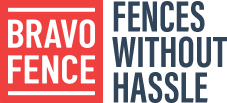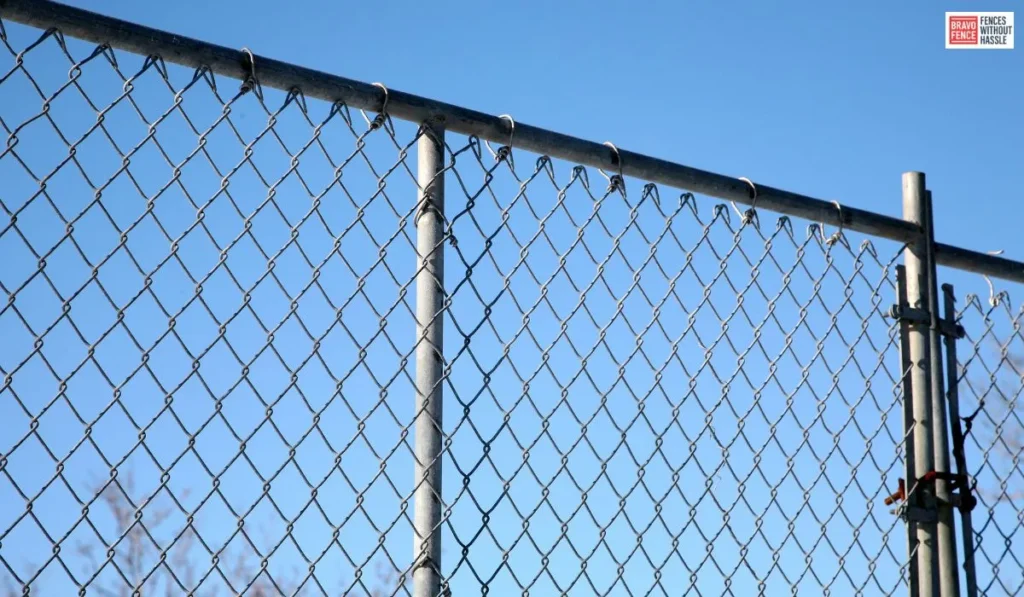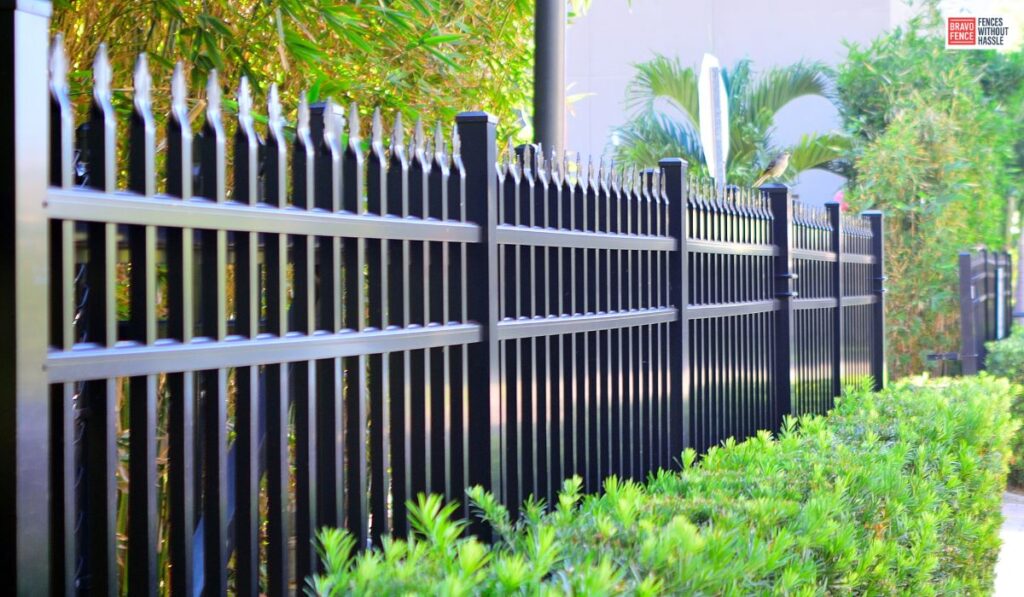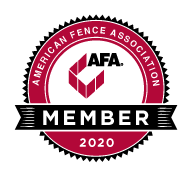When it comes to your four-legged family member, their safety and well-being are of paramount importance.
One crucial aspect of ensuring your dog’s security is investing in the right fence materials for your property.
In this comprehensive guide, we will explore the world of dog-friendly fence materials, providing you with valuable insights to create a safe and comfortable haven for your furry friend.
The Importance of Dog-Friendly Fences
- Ensuring safety and security: A fence provides a physical barrier that keeps your dog safe within your property, preventing them from wandering into potentially dangerous situations.
- Preventing escapes and accidents: Dogs are naturally curious, and without a fence, they might run off, putting themselves at risk of accidents or getting lost.
- Maintaining peace with neighbors: A well-constructed fence also helps maintain good relations with your neighbors by preventing your dog from entering their yards or causing disturbances.
Factors to Consider Before Choosing Fence Materials
- Dog breed and size: The size and breed of your dog will influence the type of materials you need.
Larger, more energetic dogs may require sturdier materials.
- Behavioral tendencies: Consider your dog’s behavior. Some dogs are jumpers, while others are diggers.
Your fence should address these tendencies.
- Aesthetic preferences: The fence should complement your property’s aesthetics while still meeting your dog’s needs.
Exploring Dog-Friendly Fence Options
Wooden Fences: Timeless Charm and Durability
- Advantages of wooden fences: Wood offers a classic, attractive look and is durable.
It can be stained or painted to match your property.
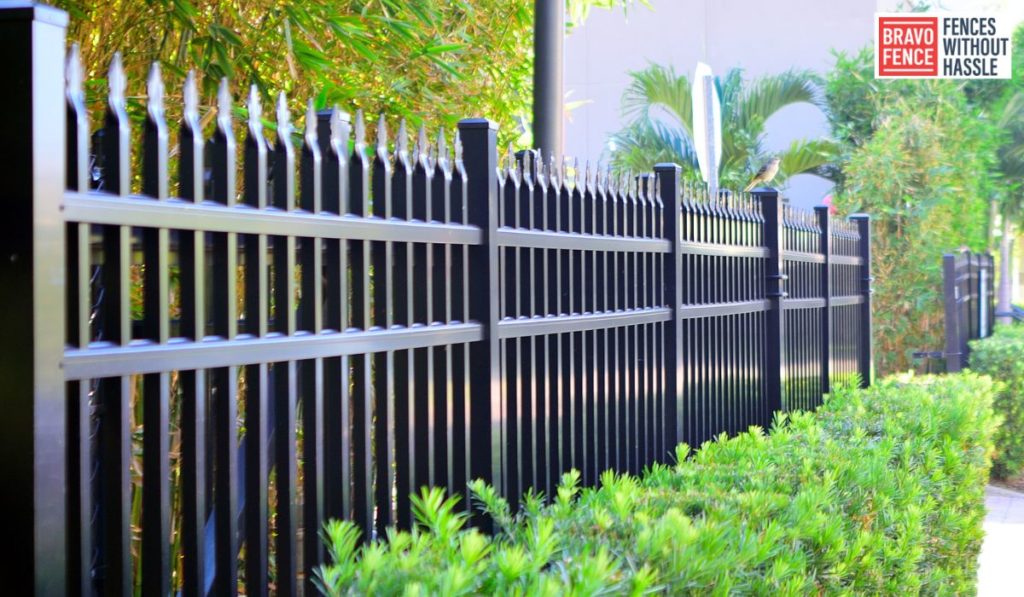
- Maintenance tips: Regular sealing or staining is necessary to prevent rot and maintain the wood’s integrity.
- Environmental considerations: Opt for sustainable wood sources to minimize environmental impact.
Vinyl Fences: Low-Maintenance Elegance
- Benefits of vinyl fencing: Vinyl is low maintenance, resistant to rot and pests, and comes in various styles and colors.
- Design versatility: Vinyl can mimic the appearance of wood or other materials, allowing for customization.
- Cost-efficiency over time: Although vinyl may have a higher upfront cost, its durability can save you money on maintenance in the long run.
Chain-Link Fences: Affordable and Functional
- Pros and cons: Chain-link fences are cost-effective and provide visibility.
However, they may lack privacy and aesthetics.
- Adding privacy options: You can enhance a chain-link fence with privacy slats or screens.
- Durability in various climates: Chain-link fences are resilient and can withstand different weather conditions.
Composite Fences: The Best of Both Worlds
- Understanding composite materials: Composites combine wood fibers and plastic, offering the appearance of wood with the durability of plastic.
- Longevity and eco-friendliness: Composites are resistant to rot and insects and are often made from recycled materials.
- Maintenance ease: They require minimal maintenance, making them a convenient choice.
Invisible Fencing: A High-Tech Solution
- How invisible fences work: These systems use buried wires and a dog collar with a receiver to create an invisible boundary.
- Training your dog: Proper training is crucial to ensure your dog understands the boundaries and responds to the warning signals.
- Limitations and considerations: Invisible fences may not be suitable for all dogs, and their effectiveness can vary based on factors like the dog’s temperament and the presence of distractions.
Enhancing Dog-Friendly Fences
Gates and Entrances
- Choosing the right gate: Ensure your gate is sturdy and secure.
Opt for self-closing mechanisms to prevent accidental escapes.
- Dog-friendly latches: Use latches that your dog can’t easily manipulate to open the gate.
- Ensuring secure entry and exit: Check for gaps or weaknesses around the gate that your dog could exploit.
Landscaping Around Fences
- Dog-friendly plants and landscaping ideas: Choose plants that are safe for dogs and consider adding rocks or mulch to prevent digging.
- Maintaining a visually appealing yard: Balance aesthetics with functionality to create an inviting space.
- Avoiding hazards: Remove any toxic plants or potential hazards from your dog’s reach.
Adding Shade and Comfort
Building dog-friendly shelters: Provide a shaded area or doghouse to protect your pet from the elements.
Providing water and food stations: Keep fresh water and food accessible near the fence to ensure your dog stays hydrated and well-fed.
Incorporating play areas: Designate an area within the enclosure for play, exercise, and mental stimulation.
DIY vs. Professional Installation
DIY Fence Installation: Pros and Cons
- Cost savings: DIY installation can save money, but it requires time and effort.
- Ensuring quality: Proper installation is crucial to the fence’s effectiveness and longevity.
- Time and effort considerations: Assess whether you have the skills and time to complete the installation correctly.
Hiring Professionals: Expertise and Peace of Mind
- Choosing the right fence contractor: Research and select a reputable contractor with experience in dog-friendly fencing.
- Customization options: Professionals can tailor the fence to your specific needs and preferences.
- Warranty and support: Many professional installations come with warranties and ongoing support for maintenance and repairs.
Maintaining Your Dog-Friendly Fence
Regular Inspections and Repairs
- Signs of wear and tear: Inspect your fence regularly for loose boards, damaged sections, or rust in metal fences.
- DIY maintenance tips: Learn basic repair and maintenance tasks to address issues promptly.
- When to call professionals: For extensive damage or structural issues, it’s best to consult a professional for repairs.
Seasonal Considerations
- Winter care: Remove snow and ice buildup to prevent damage.
Avoid using salt near the fence, as it can corrode some materials.
- Summer precautions: Ensure your dog has access to shade and water during hot weather.
Check for signs of heat stress.
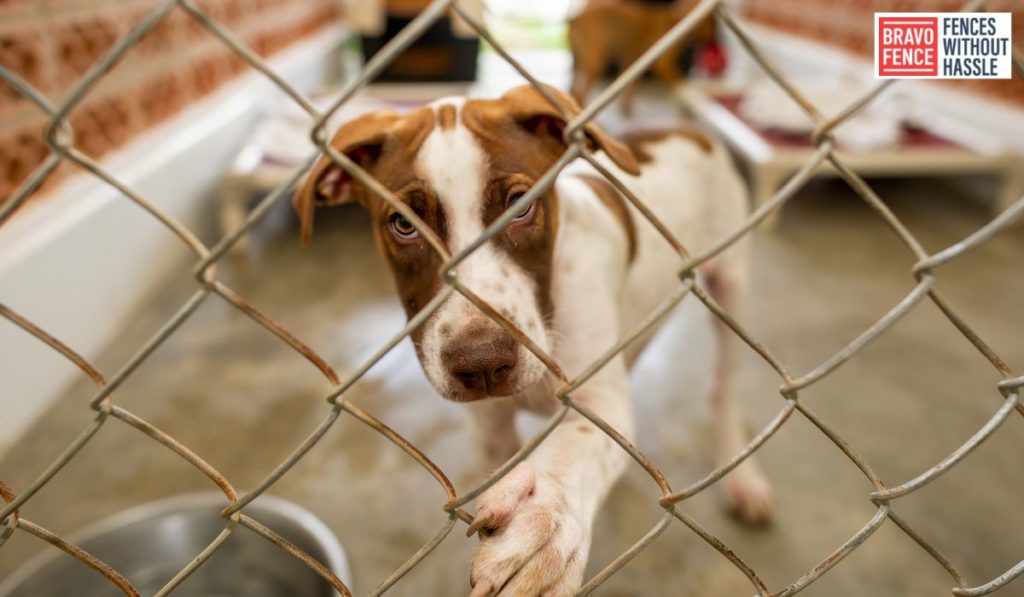
- Protecting your fence from the elements: Regularly inspect your fence’s condition to catch and address weather-related damage early.
Conclusion
In conclusion, selecting the right dog-friendly fence materials is a crucial step in ensuring your furry friend’s safety and happiness.
Whether you opt for the timeless charm of wooden fences, the low-maintenance elegance of vinyl, the affordability of chain-link, or the versatility of composite materials, your choice should align with your dog’s needs and your aesthetic preferences.
Enhance your fence with the right gates, landscaping, and comfort features, and always consider whether DIY installation or professional help is the best option.
Regular maintenance will keep your fence in top condition, providing your dog with a secure and enjoyable space for years to come.
If you’re looking for just the right fence for your dog, contact Bravo Fence Company today. We’ll work with you and your furry friend to find the best fence to suit your needs. With decades of combined experience, our builders have seen it all, and they’re happy to help you find the right solution for your home.
Frequently Asked Questions
What is the best fence material for a large, active dog?
For larger and active dogs, vinyl and composite fences are excellent choices due to their durability and low maintenance.
Can I install an invisible fence on my own?
While it’s possible to install an invisible fence yourself, it’s recommended to seek professional assistance to ensure proper training and effectiveness.
How can I make my fence more aesthetically pleasing?
Consider landscaping around your fence with dog-friendly plants and adding decorative elements like trellises or arbors.
Are there any eco-friendly fence materials available?
Yes, composite fences are often made from recycled materials and are considered an eco-friendly option.
What’s the typical lifespan of a well-maintained wooden fence?
With proper maintenance, a wooden fence can last 20-25 years or even longer, depending on the wood type and climate.
Can invisible fences harm my dog?
When used correctly and with proper training, invisible fences are safe for dogs. However, misuse can lead to stress or anxiety.
Are there any alternatives to traditional fencing for small yards?
Yes, you can consider using wireless dog containment systems that create an invisible boundary without the need for physical fences.
How do I choose the right gate size for my dog?
The gate should be tall enough that your dog can’t jump over it and wide enough for easy passage without squeezing through.
Can I use a combination of different fence materials?
Yes, you can mix materials for different sections of your fence to achieve the desired balance of aesthetics, functionality, and cost-effectiveness.
